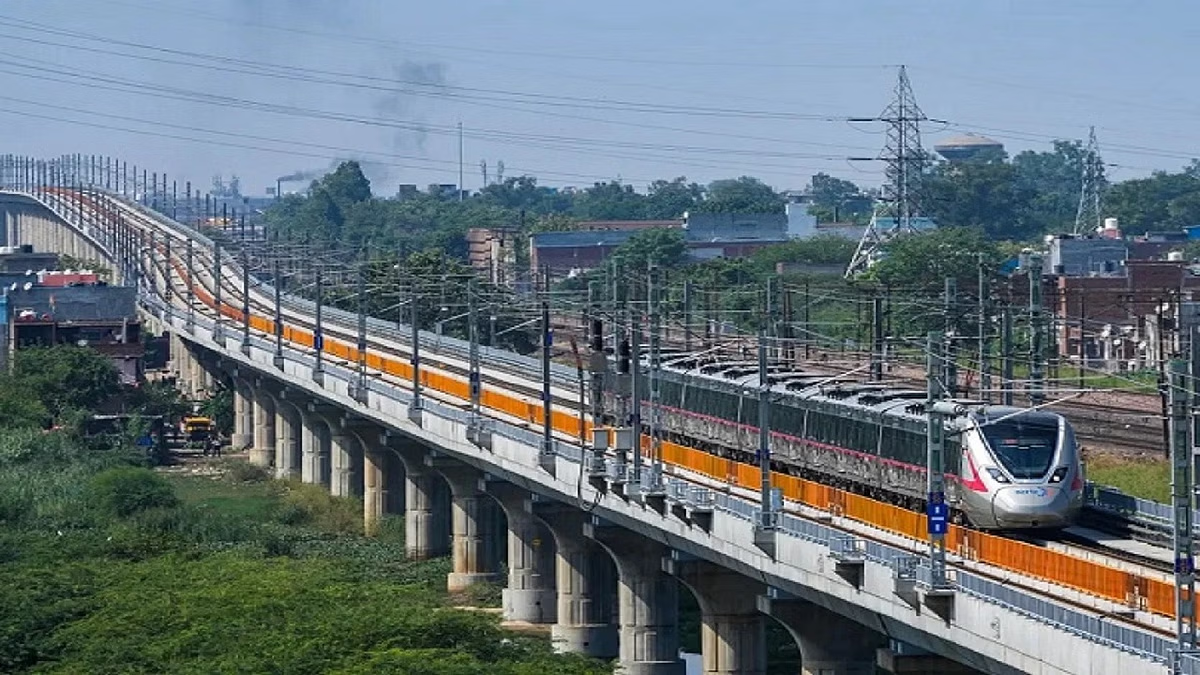The proposed Namo Bharat high-speed train corridor from Noida International Airport in Jewar to the upcoming New Agra Urban Centre is set to redefine connectivity and catalyse regional development.
The 131-kilometre railway line is expected to compress the travel time between the two strategic urban nodes to just 50 minutes, positioning the corridor as a vital link between the National Capital Region (NCR) and the heartland of Uttar Pradesh. With the train’s design speed of 160 kilometres per hour, this development marks a decisive step towards building sustainable, multimodal urban corridors.
Planned to align with the Yamuna Expressway, the project is being steered by the Yamuna Expressway Industrial Development Authority (YEIDA) as part of a broader vision to transform New Agra into a high-capacity urban zone. The revised zoning proposal, recently submitted to the Centre for approval, spans nearly 9,000 hectares. It is projected to accommodate over 14 lakh families and create employment opportunities for up to 8.5 lakh individuals. The area will emerge not only as a residential and commercial hub but also as a beacon of sustainable city planning—integrating green mobility, digital entertainment ecosystems, and equitable housing frameworks.
Beyond its transport utility, the Namo Bharat corridor has been envisioned as a key enabler of the state’s economic blueprint. With the upcoming Noida International Airport at Jewar just 34 kilometres from the zero point of the Yamuna Expressway, the train line is set to harness the regional connectivity potential of the airport, providing seamless access for both passengers and logistics operations. Strategically, this rail link will pass through several districts including Bulandshahr, Aligarh, Hathras, and Mathura, intersecting over 300 villages—many of which fall under the direct influence zone of YEIDA. This is expected to foster inclusive development by integrating rural and semi-urban belts into the mainstream urban economy.
The proposed city of New Agra is being planned as a next-generation urban agglomeration with a multi-layered road network, extensive green buffers, and pedestrian-first planning principles. Each sector of the city will have dedicated walking corridors and environmental safeguards to manage vehicular emissions and traffic spillovers. In alignment with global standards, the plan also includes ambitious tourism infrastructure, ranging from futuristic theme parks powered by virtual and augmented reality to premium hotels, resorts, and world-class convention centres. Inspired by global benchmarks like Disneyland and Universal Studios, these components are intended to give Agra a renewed identity as a 21st-century smart tourism and cultural hub.
By drastically reducing the Noida-Agra commute, which currently takes around three hours via road, the Namo Bharat line is expected to drive exponential growth in tourism footfalls. It will also enhance the liveability and economic vibrancy of both Noida and Agra while upholding the goals of environmental sustainability and gender-neutral mobility planning. With preparations underway to table the proposal at the next board meeting of YEIDA, the project now awaits formal approvals before construction begins. If executed within stipulated timelines, this transformative rail link could emerge as a model for future green mobility corridors in India’s rapidly urbanising landscape.
Namo Bharat train to connect Noida Agra




